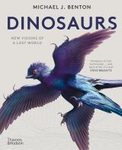Popular Science
By: Henk Tennekes(Author)
201 pages, 80 illus, figs, tabs
An investigation into how machines and living creatures fly, and of the similarities between butterflies and Boeings, paper airplanes and plovers
![The Simple Science of Flight The Simple Science of Flight]()
Click to have a closer look
About this book
Customer reviews
Biography
Related titles
About this book
From the smallest gnat to the largest aircraft, all things that fly obey the same aerodynamic principles. In The Simple Science of Flight, Henk Tennekes investigates just how machines and creatures fly: what size wings they need, how much energy is required for their journeys, how they cross deserts and oceans, how they take off, climb, and soar. Fascinated by the similarities between nature and technology, Tennekes offers an introduction to flight that teaches by association.
Swans and Boeings differ in numerous ways, but they follow the same aerodynamic principles. Biological evolution and its technical counterpart exhibit exciting parallels. What makes some airplanes successful and others misfits? Why does the Boeing 747 endure but the Concorde now seem a fluke? Tennekes explains the science of flight through comparisons, examples, equations, and anecdotes.
The new edition of this popular book has been thoroughly revised and much expanded. Highlights of the new material include a description of the incredible performance of bar-tailed godwits (7,000 miles nonstop from Alaska to New Zealand), an analysis of the convergence of modern jetliners (from both Boeing and Airbus), a discussion of the metabolization of energy featuring Lance Armstrong, a novel treatment of the aerodynamics of drag and trailing vortices, and an emphasis throughout on evolution, in nature and in engineering. Tennekes draws on new evidence on bird migration, new wind-tunnel studies, and data on new airliners.
Customer Reviews
Biography
Henk Tennekes is Director of Research Emeritus at the Royal Netherlands Meteorological Institute, Emeritus Professor of Meteorology at Free University, Amsterdam, and Emeritus Professor of Aerospace Engineering at Pennsylvania State University. He is the coauthor of A First Course in Turbulence (MIT Press, 1972).
Popular Science
By: Henk Tennekes(Author)
201 pages, 80 illus, figs, tabs
An investigation into how machines and living creatures fly, and of the similarities between butterflies and Boeings, paper airplanes and plovers
"This was a great little book when it came out in its original edition; this new version is even better, as it contains both Henk's homage to his favorite flying machine (Boeing 747) and explanations based on some of the unexpected results of recent experiments with bird flight (including a phenomenal gliding jackdaw). Read it, then watch the birds and planes, and then dip into it again and again."
– Vaclav Smil, University of Manitoba, and author of Global Catastrophes and Trends
"One gets a fine sense of how so much of aircraft design – whether by humans or by evolution – depends on size and mission. This new version of The Simple Science of Flight broadens the enlightenment that so many of us found appealing in its predecessor. It yields even more of that satisfying 'now I understand what's happening' rather than the usual 'how brilliant those designers must be.' And I know of no book that derives such an awesome wealth of insight from such simple quantification. Beyond being informative, it provides pleasant reading – for any one who travels by air, watches animals fly, or dreams of learning to fly."
– Steven Vogel, James B. Duke Professor, Emeritus, Duke University


































